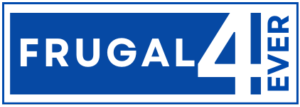When I embarked on my blogging journey a few years back, I genuinely believed that great content alone would pave the way to success. But, I soon realized content is only one side of the coin. A crucial turning point came when I stumbled upon a statistic from Backlinko that mentioned over 50% of all website traffic comes from organic search. The deeper I delved into the realm of SEO, the clearer it became: mastering SEO was non-negotiable for online success.
As I began to optimize my website and content, not only did my website traffic surge, but a significant portion of it started converting into genuine passive income. And that's the magic of SEO – it's not just about visibility; it's about monetizing that visibility. For every blogger out there, especially in the realm of passive income, understanding and implementing SEO can make the difference between a hobby blog and a lucrative venture.

What is Technical SEO?
If I had to draw a parallel, I'd say think of your website as a house. Technical SEO is akin to the foundation and structure of that house, ensuring it's strong, safe, and secure. It doesn't matter how beautiful the interiors (your content) are or how great your garden (backlinks) is. The house won't stand tall for long if the foundation is shaky.
In the simplest terms, technical SEO refers to optimizing the technical aspects of a website to make it easy for search engines to crawl, understand, and rank the content. It doesn’t necessarily involve the site's actual content but focuses on elements like site speed, mobile optimization, security, and overall website architecture. Imagine a librarian trying to organize books. Technical SEO ensures each book (your web pages) is easily identifiable, readable, and correctly categorized.
Now, let's break down the SEO trifecta: Technical SEO, On-page SEO, and Off-page SEO in a more visual manner:
| SEO Type | Description | Examples |
|---|---|---|
| Technical SEO | Optimizing the technical aspects of a website to ensure it can be easily accessed, crawled, and indexed by search engines. | Website speed, mobile-friendliness, sitemaps, secure connections |
| On-page SEO | Optimize your website's pages to ensure content is high quality and relevant for search engines. | Keyword optimization, meta descriptions, headers, content quality |
| Off-page SEO | Activities that occur outside your website but affect your ranking. | Backlinks, social signals, brand mentions |
In essence, while all three branches of SEO are crucial, technical SEO is the foundational step. Without it, no amount of fantastic content (on-page SEO) or backlink efforts (off-page SEO) will reap the desired results. It's like trying to drive a car with a faulty engine; no matter how shiny the exterior, it won't get you far.
So, as you delve deeper into the realm of SEO, remember to start with a strong technical foundation. Ensure that search engines can access, crawl, and index your site efficiently. Once that's in place, the content you produce and the links you cultivate will truly shine, helping you drive that passive income dream home.
Why Technical SEO is Crucial
When we talk about passive income, especially through online ventures, the equation is quite straightforward: more web traffic often translates to more revenue opportunities. But how do we drive that coveted web traffic?
A study from HubSpot revealed that 64% of marketers actively invest time in search engine optimization (SEO). The reason? Websites that appear on the first page of search engine results account for a staggering 91.5% of web traffic. This means that if your site isn't technically sound, it may not rank well, and you're potentially missing out on a significant chunk of visitors and, subsequently, potential revenue.
Let's dive into a real-life example. Take Brian Dean from Backlinko. His blog might look like another SEO advice platform, but the technical precision behind it is impeccable. By focusing on aspects like site speed, mobile optimization, and structured data, he ensures that his high-quality content is easily accessible and indexable by search engines. This technical prowess and content excellence have made Backlinko one of the top SEO blogs worldwide, with thousands of visitors daily. And with such traffic, passive income avenues like course sales, affiliate marketing, and ad revenue become significantly more lucrative.
But it's not just big names that benefit. Countless bloggers and small business owners have reported dramatic shifts in their web traffic and income once they squared away their technical SEO issues. Whether it's a travel blogger who optimized her images and doubled her site speed or an e-commerce business that fixed broken links and saw a 30% increase in sales, the stories are endless.
Overlooking technical SEO is not an option if you're aiming for a robust passive income stream. It's the bridge that connects your valuable content to the vast sea of potential readers, customers, and subscribers. So, make sure that the bridge is sturdy, efficient, and user-friendly.
Key Technical SEO Fundamentals

1. Website Structure and Navigation
In the vast world of the internet, think of your website as a digital home. Just as you'd want your guests to navigate through your house easily, find the restroom, or grab a snack from the kitchen without getting lost, you'd want your website visitors to find the information they're seeking effortlessly. This is where the importance of a logically structured website comes into play.
Benefits of a Logically Structured Website
A well-organized site structure is not just beneficial for your audience; it also provides a boost in search engine rankings. Search engines favor websites that are easily navigable, as it show a commitment to providing a good user experience. Moreover, a structured website means search engine crawlers can easily index your site's content, ensuring that your pages appear in relevant search results.
- User Retention: A logically laid out website ensures visitors can quickly find what they're looking for, reducing bounce rates.
- Enhanced Credibility: A well-structured site speaks volumes about your professionalism, bolstering your brand's credibility.
- SEO Boost: As mentioned earlier, search engines appreciate websites that cater to a seamless user experience, often rewarding them with higher rankings.
Tips to Structure Your Site Effectively
Crafting an effective website structure might seem daunting, but following some tried and tested guidelines can create a user-friendly and search-engine-optimized site.
- Plan Ahead: Before diving into web design, sketch out a blueprint. Identify the primary categories and subcategories your content will fall into.
- Keep it Shallow: Ensure that all important pages are accessible within three to four clicks from the homepage.
- Consistent Navigation: Whether you opt for a top menu, sidebar, or footer links, maintain consistency in navigation throughout your site.
- Use Descriptive URLs: URLs should be easy to read and indicative of the content. Instead of “yourwebsite.com/p1234”, opt for something like “yourwebsite.com/passive-income-tips”.
- Breadcrumb Navigation: These small text paths, usually located at the top of a page, show the user where they are in the site's hierarchy. They enhance user experience and are favored by search engines.
2. Mobile Optimization
The meteoric rise in mobile usage has heralded a new era in the digital world. Today, more than ever, users turn to their mobile devices to browse the web, shop, socialize, and more. Recognizing this shift, search engines have adapted, giving birth to the concept of mobile-first indexing.
Explanation of Mobile-First Indexing
Mobile-first indexing essentially means that search engines, like Google, use the mobile version of a website's content for indexing and ranking. In the past, the desktop version of a website's content was the primary source for indexing. However, with this change, even if someone's searching from a desktop, the mobile version of your site plays a pivotal role in how your site ranks. This shift reflects the broader user trend towards mobile browsing and acknowledges the importance of delivering an optimal mobile experience.
Making Your Website Responsive
Ensuring your website is mobile-friendly is no longer a luxury; it's a necessity. Here's a straightforward guide to help you make your website responsive:
- Choose a Mobile-Responsive Theme: If you're using platforms like WordPress, many themes are designed to be mobile-responsive right out of the box. Always opt for these.
- Flexible Grid Layout: Ensure your site layout adjusts and looks cohesive across different device sizes. This can be achieved using CSS flexbox or grid systems.
- Optimize Images: Large images can slow down your site on mobile. Use tools to compress images without sacrificing their quality.
- Test with Google's Mobile-Friendly Tool: After making these changes, plug your website into Google's Mobile-Friendly Test to see how well your site performs.
3. Site Speed
In our fast-paced world, waiting feels like a relic of a bygone era. This sentiment translates online as well, where every second a page takes to load can feel like an eternity. More than just a minor inconvenience, site speed is now a crucial factor influencing user experience and your website's success.
The Impact of Site Speed on User Experience
A slow-loading website can be a user's worst nightmare. In fact, a delay of just a few seconds can lead to significant bounce rates. Moreover, 53% of mobile visitors are likely to leave a page that takes longer than three seconds to load. This not only results in lost potential conversions but can also tarnish your brand's reputation. Furthermore, search engines have started to factor site speed into their ranking algorithms, recognizing its importance in providing a quality user experience.
Practical Steps to Boost Your Website's Speed
Optimizing site speed needn't be a Herculean task. Here are some straightforward steps to get you started:
- Optimize Images: Large, high-resolution images can be a major culprit for slow site speeds. Tools like TinyPNG or Compressor.io can help reduce image sizes without compromising quality.
- Enable Browser Caching: By storing some files locally in the user's browser, you can reduce the need to re-fetch data, speeding up subsequent loads.
- Minimize Code: Clean up your site's code by removing unnecessary spaces, commas, or other unnecessary characters using tools like CSSNano and UglifyJS.
- Use Content Distribution Networks (CDNs): CDNs can distribute the load, saving bandwidth and speeding up access for users geographically distant from your servers.
- Reduce Redirects: Each redirect triggers an additional HTTP request, increasing load times. Keep them to a minimum!
4. XML Sitemaps and Robots.txt
Diving into the world of SEO often feels like plunging into a sea of technical jargon. Among these terms, XML Sitemaps and Robots.txt might sound overly technical, but they're foundational for any website looking to rank well on search engines.
Breaking Down What These Terms Mean
XML Sitemap: Think of an XML Sitemap as a roadmap of your website that leads search engines to all your important pages. It's an XML file listing the URLs of a site, aiding search engines in crawling and indexing the site's content. Particularly useful for websites that have thousands of pages, a sitemap ensures that search engines are aware of all the pages on your site.
Robots.txt: While a sitemap tells search engines where to go, Robots.txt tells them where not to go. It's a simple text file in your site's root directory that instructs search engines on which pages or sections of the site should not be crawled or indexed.
Step-by-Step Guide: Creating and Submitting an XML Sitemap
- Create the Sitemap: Numerous online tools, like XML-sitemaps.com, can help you generate a sitemap for your website. If you're on WordPress, plugins like Yoast SEO can do this for you.
- Upload to Your Website: Once generated, upload the XML file to the root directory of your website. It typically looks like: yourwebsite.com/sitemap.xml.
- Submit to Search Engines: Go to Google Search Console and Bing Webmaster Tools to submit your sitemap. This action informs them of its existence and encourages faster indexing.
By understanding and implementing XML Sitemaps and Robots.txt, you're taking proactive steps to ensure that search engines can effortlessly crawl, understand, and index your website's content.
5. Secure and Accessible Website (SSL)
In today's digital landscape, the padlock symbol and “https://” in a website's URL have become more than just reassuring signs. They are now prerequisites for any website aiming to provide a secure and accessible user experience. Let's explore why HTTPS is no longer optional and how to transition from HTTP to HTTPS.
Why HTTPS is No Longer Optional
HTTPS (Hypertext Transfer Protocol Secure) ensures that data transferred between a user's browser and the website's server remains encrypted and secure. This encryption is crucial for several reasons:
- Protection of User Data: HTTPS safeguards sensitive user information, such as login credentials, payment details, and personal data, from potential eavesdroppers and cyber threats.
- Trust and Credibility: Visitors are more likely to trust websites that provide a secure browsing experience. Major browsers often label HTTP sites as “Not Secure,” potentially deterring users.
- SEO Benefits: Search engines like Google give preference to secure websites in their rankings, making HTTPS a ranking factor. This means HTTPS can improve your website's visibility and SEO performance.
The Process of Transitioning from HTTP to HTTPS
Transitioning your website to HTTPS might seem like a complex process, but it's well worth the effort. Here's a simplified guide to help you get started:
- Get an SSL Certificate: Purchase an SSL certificate from a reputable certificate authority (CA) or through your web hosting provider. There are various types of certificates, so choose one that suits your needs.
- Install the Certificate: Follow the CA's instructions to install the SSL certificate on your web server. Your hosting provider may also offer support during this process.
- Update Website Links: Ensure all internal links and resources (images, stylesheets, scripts) on your website use “https://” instead of “http://”. This prevents mixed content issues.
- Update Your CMS: If you're using a content management system (CMS) like WordPress, update your website settings to use HTTPS as the default connection.
HTTPS is no longer an optional feature for websites. It's crucial for protecting user data, building trust, and enhancing SEO. Transitioning from HTTP to HTTPS might take some effort, but the security, credibility, and search engine ranking benefits are well worth it.
6. Duplicate Content Issues
In the vast landscape of the internet, content is king. However, when it comes to SEO, the phrase takes a slight twist – original content is king. Duplicate content issues can harm your website's search engine rankings and user experience. Let's explore the potential problems caused by duplicate content and best practices to prevent them.
Potential Problems Caused by Duplicate Content
Duplicate content can lead to several detrimental outcomes for your website:
- Search Engine Confusion: When search engines encounter multiple pages with identical or highly similar content, they struggle to determine which version to index and rank. This confusion can result in lower rankings for your pages.
- Wasted Crawl Budget: Search engines allocate a limited “crawl budget” to each website. Duplicate content can consume this budget unnecessarily, preventing important pages from being crawled and indexed.
- User Confusion: Duplicate content can confuse visitors. If they land on different pages with the same information, they may question your site's credibility and relevance.
Best Practices to Prevent Content Duplication
Preventing duplicate content issues requires a proactive approach:
- Use Canonical Tags: Canonical tags indicate the preferred version of a page when multiple versions exist. This helps search engines understand which version to index.
- Avoid Boilerplate Text: Minimize the use of generic, repetitive text across multiple pages. Each page should offer unique value to users and search engines.
- Redirect Duplicate URLs: If you have multiple URLs pointing to the same content (e.g., “www” and “non-www” versions), set up 301 redirects to consolidate them into one preferred URL.
- Consolidate Similar Pages: Merge or consolidate pages with similar content into one comprehensive page. This reduces the chances of duplication.
Common Mistakes in Technical SEO and How to Avoid Them
Embarking on the journey of technical SEO can be daunting, especially for beginners. In the world of algorithms and rankings, even seemingly minor errors can have a significant impact. Let's explore some common mistakes that newcomers often stumble upon and discover how to steer clear of them.
Listing Frequent Pitfalls Beginners Fall Into
1. Neglecting Mobile Optimization: In our mobile-centric era, ignoring mobile optimization is a grave error. Google's mobile-first indexing prioritizes mobile-friendly websites. Ensure your site is responsive and provides an excellent mobile user experience.
2. Ignoring Page Speed: Slow-loading pages frustrate users and hurt SEO. Don't overlook site speed. Compress images, minimize code, and use browser caching to improve load times.
3. Overlooking Technical Audits: Skipping regular technical audits is like navigating a ship without a compass. Conduct regular audits to identify and fix issues like broken links, duplicate content, and crawl errors.
4. Underestimating the Power of XML Sitemaps: Not creating and submitting an XML sitemap can hinder search engines' ability to crawl and index your site effectively. Always have a well-structured sitemap and submit it through Google Search Console.
5. Neglecting SSL (HTTPS): Not securing your site with HTTPS can lead to a “Not Secure” warning from browsers, eroding user trust. Invest in an SSL certificate to encrypt data and boost credibility.
Solutions to These Common Errors
1. Prioritize Mobile Optimization: Use responsive design, optimize images for mobile, and test your site's mobile-friendliness with tools like Google's Mobile-Friendly Test.
2. Optimize for Speed: Regularly monitor and improve site speed. Utilize image compression, minify code, leverage browser caching, and consider a content delivery network (CDN) for faster load times.
3. Perform Technical Audits: Conduct periodic technical audits using tools like Screaming Frog or Google Search Console. Address issues promptly to keep your site in top shape.
4. Embrace XML Sitemaps: Create a well-structured XML sitemap and submit it to search engines. This ensures all your valuable content gets indexed.
5. Implement SSL (HTTPS): Secure your site with an SSL certificate. Most hosting providers offer easy integration. Update your website settings to use HTTPS as the default connection.
Conclusion
As we conclude our journey into the world of technical SEO, it's essential to reiterate the significance of this fundamental aspect, particularly for passive income enthusiasts. Technical SEO isn't just about optimizing your website for search engines; it's about creating a seamless, user-friendly experience that can drive more traffic and increase your online earnings.
We've explored the vital elements of technical SEO, from website structure and mobile optimization to site speed, XML sitemaps, secure connections, and the avoidance of duplicate content. Each of these factors plays a crucial role in enhancing your website's performance, user experience, and search engine visibility.
Today's digital landscape demands excellence in technical SEO. It's not just an option; it's a necessity. As you embark on your journey to passive income or seek to boost your existing online earnings, remember that technical SEO is your ally in this quest.
Now, it's time to take action. Start implementing these technical SEO strategies today. Small changes can yield significant results over time, and with persistence, your website will become a beacon of success in the vast online ocean.
Don't wait any longer. Start optimizing your website now, and watch as it becomes a powerful tool for generating passive income.










